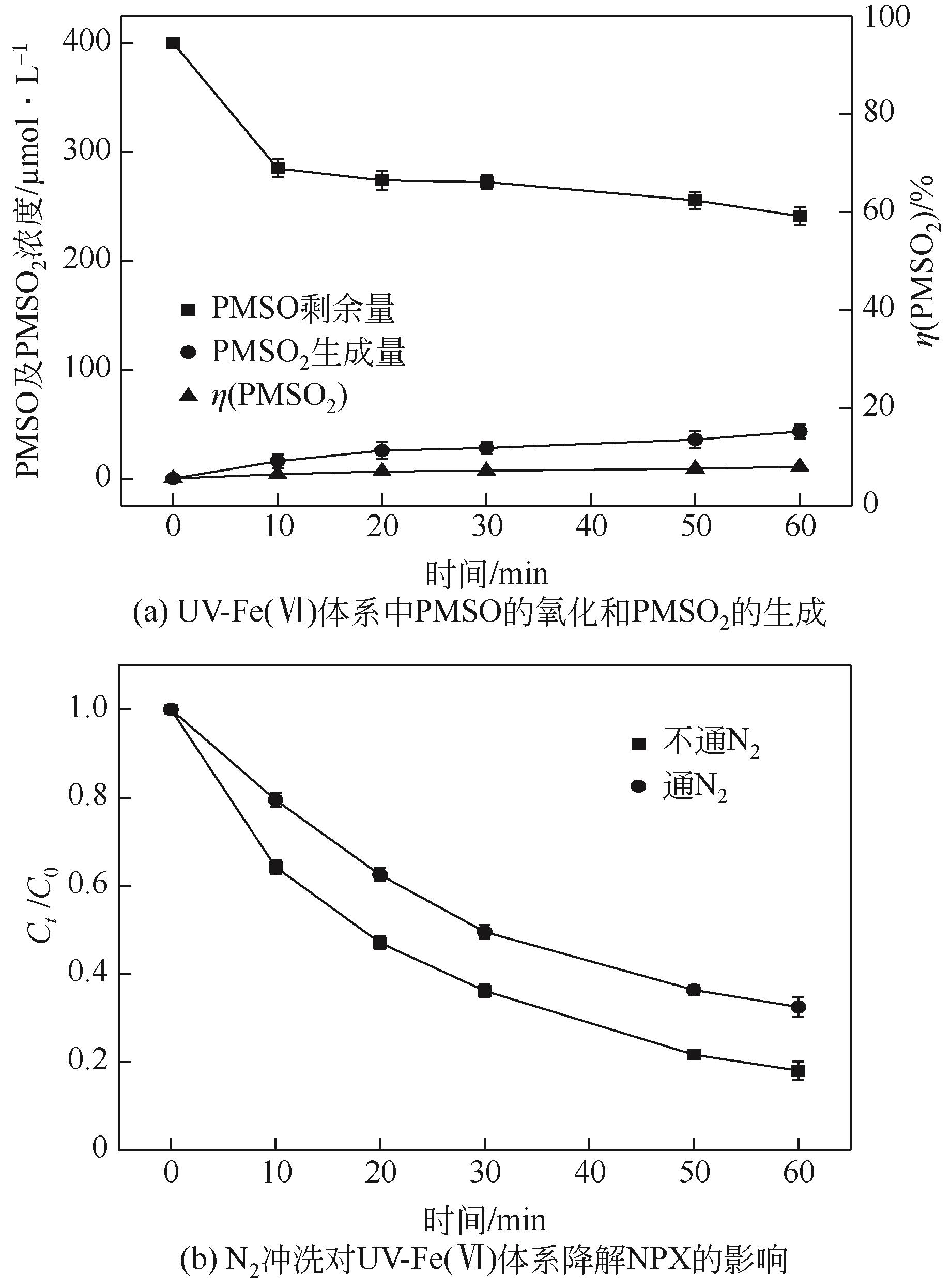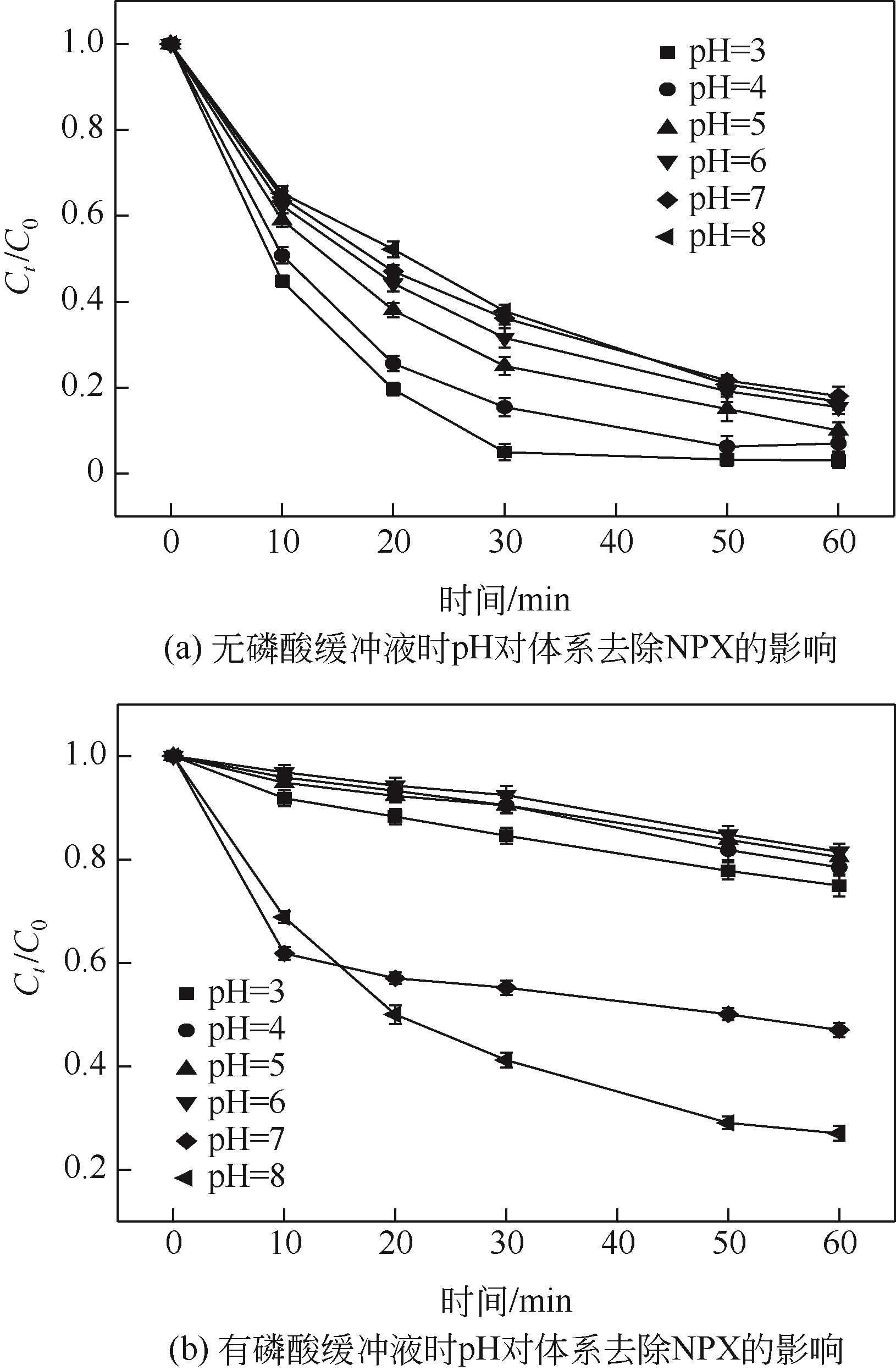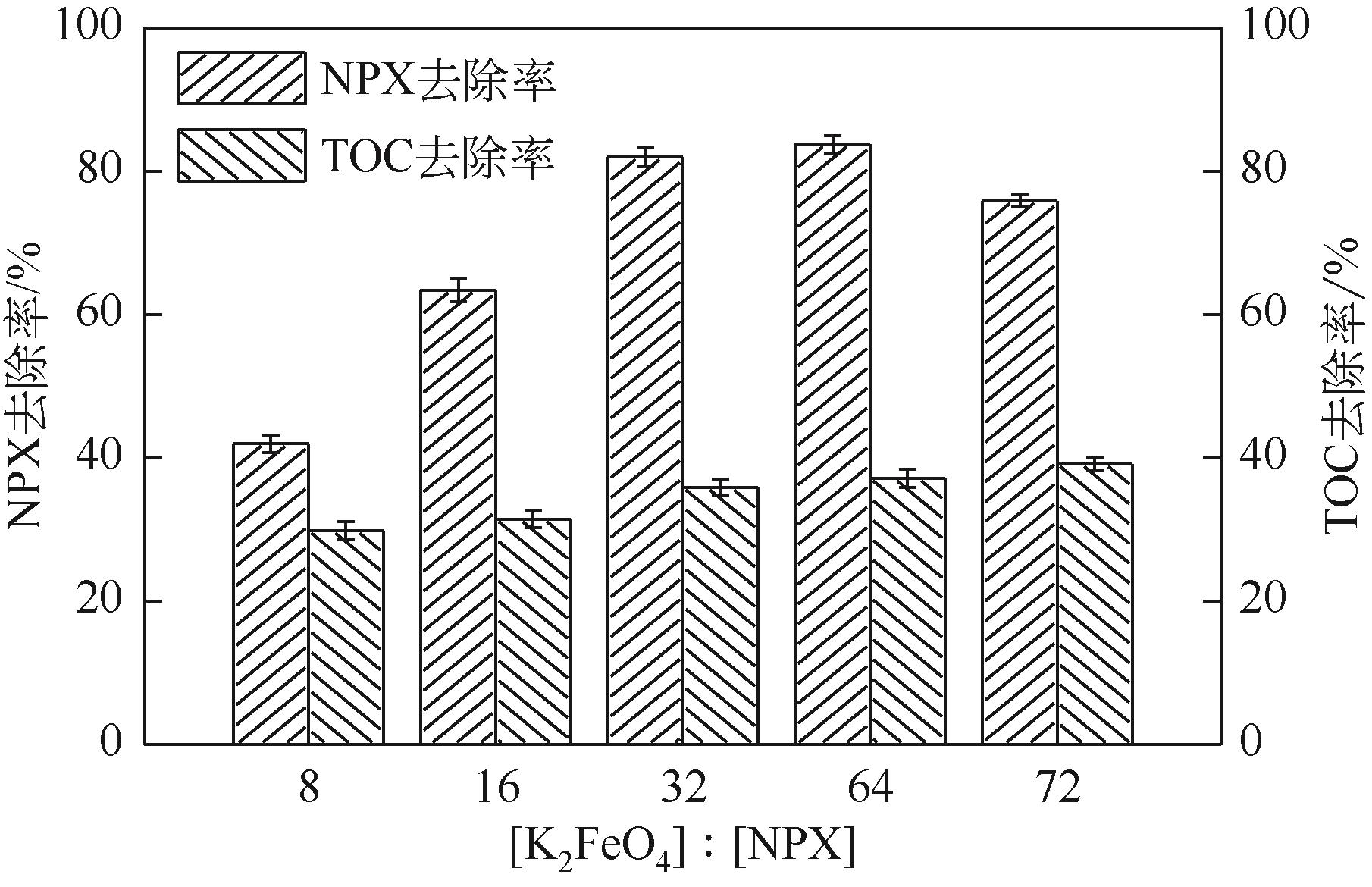| 1 |
CARBALLA M, OMIL F, LEMA J M. Removal of cosmetic ingredients and pharmaceuticals in sewage primary treatment[J]. Water Research, 2005, 39: 4790-4796.
|
| 2 |
SHARMA V K. Potassium ferrate( Ⅵ ): an environmentally friendly oxidant[J]. Advances in Environmental Research, 2002, 6: 143-156.
|
| 3 |
吕婧, 封莉, 张立秋. 不同活性炭对水中微量药物萘普生的吸附规律研究[J]. 环境科学学报, 2012, 32(10): 2443-2449.
|
|
LYU J, FENG L, ZHANG L Q. Adsorption of trace naproxen in water by different activated carbons[J]. Acta Scientiae Circumstantiae, 2012, 32(10): 2443-2449.
|
| 4 |
SHARMA V K, ZBORIL R, VARMA R S. Ferrates: greener oxidants with multimodal action in water treatment technologies[J]. Accounts of Chemical Research, 2015, 48(2): 82-191.
|
| 5 |
FENG M B, JINADATHA C, MCDONALD T J. Accelerated oxidation of organic contaminants by ferrate(Ⅵ): the overlooked role of reducing additives[J]. Environmental Science & Technology, 2018, 52(19): 11319-11327.
|
| 6 |
MANOLI K, NAKHLA G, RAY A K, et al. Enhanced oxidative transformation of organic contaminants by activation of ferrate( Ⅵ ): possible involvement of FeⅤ/FeⅣ species[J]. Chemical Engineering Journal, 2017, 307: 513-517.
|
| 7 |
FENG M, CIZMAS L, WANG Z Y, et al. Activation of ferrate(Ⅵ) by ammonia in oxidation of flumequine: kinetics, transformation products, and antibacterial activity assessment[J]. Chemical Engineering Journal, 2017, 323: 584-591.
|
| 8 |
BZDYRA B M, SPELLMAN JR C D, ANDREU I, et al. Sulfite activation changes character of ferrate resultant particles[J]. Chemical Engineering Journal, 2020, 393: 124771.
|
| 9 |
GONG H, CHU W, XU K H, et al. Efficient degradation, mineralization and toxicity reduction of sulfamethoxazole under photo-activation of peroxymonosulfate by ferrate( Ⅵ )[J]. Chemical Engineering Journal, 2020, 389: 124084.
|
| 10 |
CHU W H, LI D M, GAO N Y, et al. The control of emerging haloacetamide DBP precursors with UV/persulfate treatment[J]. Water Research, 2015, 72: 340-348.
|
| 11 |
SHADA A, CHEN J, QU R J, et al. Degradation of sulfadimethoxine in phosphate buffer solution by UV alone, UV/PMS and UV/H2O2: kinetics, degradation products, and reaction pathways[J]. Chemical Engineering Journal, 2020, 398: 125357.
|
| 12 |
CHEN Y Q, XIONG Y, WANG Z P, et al. UV/ferrate(Ⅵ) oxidation of profenofos: efficiency and mechanism[J]. Desalination and Water Treatment, 2015, 55(2): 506-513.
|
| 13 |
ASLANI H, NASSERI S, NABIZADEH R, et al. Haloacetic acids degradation by an efficient Ferrate/UV process: byproduct analysis, kinetic study, and application of response surface methodology for modeling and optimization[J]. Journal of Environmental Management, 2017, 203: 218-228.
|
| 14 |
VANESSA J, PEREIRA, HOWARD S, et al. UV degradation kinetics and modeling of pharmaceutical compounds in laboratory grade and surface water via direct and indirect photolysis at 254nm[J]. Environmental Science & Technology, 2007, 41: 1682-1688.
|
| 15 |
WU S H, LI H R, LI X, et al. Performances and mechanisms of efficient degradation of atrazine using peroxymonosulfate and ferrate as oxidants[J]. Chemical Engineering Journal, 2018, 353: 533-541.
|
| 16 |
FENG M B, SHARMA V K. Enhanced oxidation of antibiotics by ferrate(Ⅵ)-sulfur(Ⅳ) system: elucidating multi-oxidant mechanism[J]. Chemical Engineering Journal, 2018, 341: 137-145.
|
| 17 |
ZOSCHKE K, BORNICK H, WORCH E. Vacuum-UV radiation at 185nm in water treatment: a review[J]. Water Research, 2014, 52: 131-145.
|
| 18 |
SHARMA V K. Ferrate( Ⅵ ) and ferrate( Ⅴ ) oxidation of organic compounds: kinetics and mechanism[J]. Coordination Chemistry Reviews, 2013, 257: 495-510.
|
| 19 |
LI H C, SHAN C, PAN B C. Fe( Ⅲ )-doped g-C3N4 mediated peroxymonosulfate activation for selective degradation of phenolic compounds via high-valent iron oxo species[J]. Environmental Science & Technology, 2018, 52: 2197-2205.
|
| 20 |
LI Y, WU Y L, DONG W B. Trace catechin enhanced degradation of organic pollutants with activated peroxymonosulfate: comprehensive identification of working oxidizing species[J]. Chemical Engineering Journal, 2022, 429: 132408.
|
| 21 |
SHAO B B, DONG H Y, SUN B, et al. Role of ferrate(Ⅳ) and ferrate(Ⅴ) in activating ferrate(Ⅵ) by calcium sulfite for enhanced oxidation of organic contaminants[J]. Environmental Science & Technology, 2019, 53: 894-902.
|
| 22 |
GAO Y Q, ZHANG J, LI C, et al. Comparative evaluation of metoprolol degradation by UV/chlorine and UV/H2O2 processes[J]. Chemosphere, 2020, 243: 125325.
|
| 23 |
WANG Z, JIANG J, PANG S Y, et al. Is sulfate radical really generated from peroxydisulfate activated by iron(Ⅱ) for environmental decontamination[J]. Environmental Science & Technology, 2018, 52: 11276-11284.
|
| 24 |
袁光明, 皮若冰, 吴钊成, 等. 高铁酸盐-亚硫酸盐体系氧化降解水中污染物阿特拉津[J]. 化工进展, 2020, 39(9): 3794-3800.
|
|
YUAN G M, PI R B, WU Z C, et al. Oxidative degradation of atrazine in water by ferrate-sulfite system[J]. Chemical Industry and Engineering Progress, 2020, 39(9): 3794-3800.
|
| 25 |
LAI X J, NING X A, ZHANG Y P, et al. Treatment of simulated textile sludge using the Fenton/Cl- system: the roles of chlorine radicals and superoxide anions on PAHs removal[J]. Environmental Research, 2021, 197: 110997.
|
| 26 |
方智煌, 刘祥, 余阳, 等. 高铁酸盐对水中H2受体拮抗剂的降解特性[J]. 化工进展, 2021, 40(8): 4647-4655.
|
|
FANG Z H, LIU X, YU Y, et al. Performance and properties of H2 receptor antagonist degradation by ferrate[J]. Chemical Industry and Engineering Progress, 2021, 40(8): 4647-4655.
|
| 27 |
WU S H, LIU H Y, LIN Y, et al. Insights into mechanisms of UV/ferrate oxidation for degradation of phenolic pollutants: role of superoxide radicals[J]. Chemosphere, 2020, 244: 125490.
|
| 28 |
GU D, GUO C S, HOU S, et al. Kinetic and mechanistic investigation on the decomposition of ketamine by UV-254nm activated persulfate[J]. Chemical Engineering Journal, 2019, 370: 19-26.
|
| 29 |
WANG S L, WU J F, LU X Q, et al. Removal of acetaminophen in the Fe2+/persulfate system: kinetic model and degradation pathways[J]. Chemical Engineering Journal, 2019, 358: 1091-1100.
|
| 30 |
KRALCHEVSKA R P, PRUCE R, KOLARIK J, et al. Remarkable efficiency of phosphate removal: ferrate(Ⅵ)-induced in situ sorption on core-shell nanoparticles[J]. Water Research, 2016,103: 83-91.
|
| 31 |
WANG J L, WANG S Z. Activation of persulfate (PS) and peroxymonosulfate (PMS) and application for the degradation of emerging contaminants[J]. Chemical Engineering Journal, 2018, 334: 1502-1517.
|
| 32 |
CHI H Z, HE X, ZHANG J Q, et al. Hydroxylamine enhanced degradation of naproxen in Cu2+ activated peroxymonosulfate system at acidic condition: efficiency, mechanisms and pathway[J]. Chemical Engineering Journal, 2019, 361: 764-772.
|
| 33 |
JALLOULI N, ELGHNIJI K, HENTATI O, et al. UV and solar photo-degradation of naproxen: TiO2 catalyst effect, reaction kinetics, products identification and toxicity assessment[J]. Journal of Hazardous Materials, 2016, 304: 329-336.
|
| 34 |
JIMENEZ-SALCEDO M, MONGE M, TENA M T. The photocatalytic degradation of naproxen with g-C3N4 and visible light: identification of primary by-products and mechanism in tap water and ultrapure water[J]. Journal of Environmental Chemical Engineering, 2022, 10: 106964.
|
| 35 |
KANAKARAJU D, MOTTI C A, GLASS B D, et al. TiO2 photocatalysis of naproxen: effect of the water matrix, anions and diclofenac on degradation rates[J]. Chemosphere, 2015, 139: 579-588.
|
| 36 |
LUO S, GAO L W, WEI Z S, et al. Kinetic and mechanistic aspects of hydroxyl radical-mediated degradation of naproxen and reaction intermediates[J]. Water Research, 2018, 137: 233-241.
|
 ), LI Jingmei, GAO Yuqiong(
), LI Jingmei, GAO Yuqiong( )
)


















 唑
唑